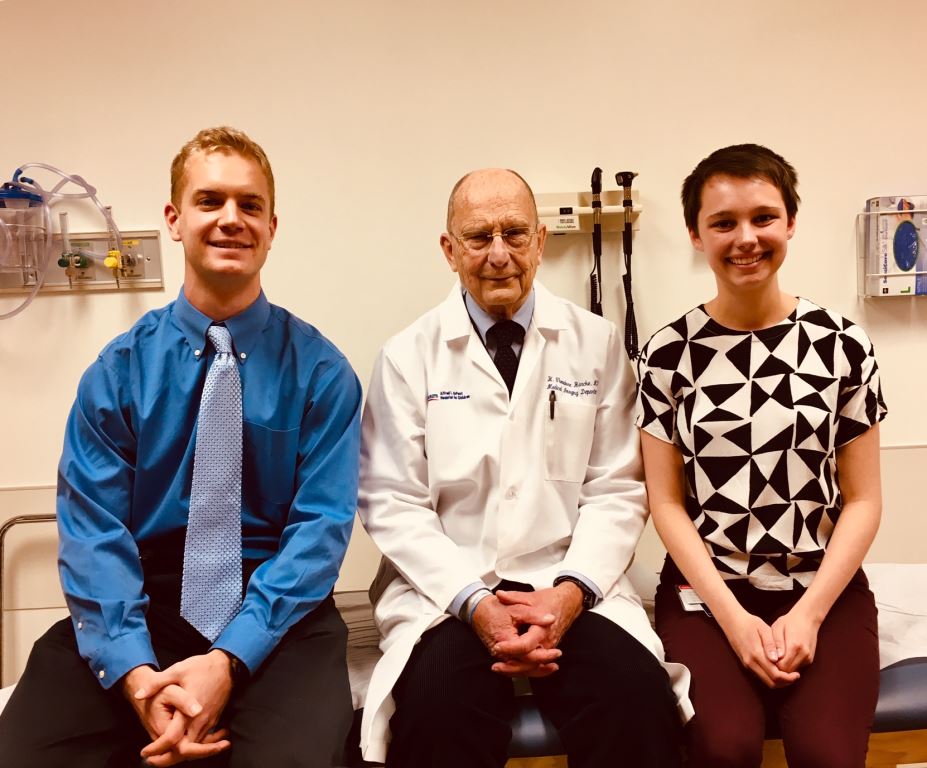
Firearm injuries and death are unfortunately not uncommon, and we need an effective tool for treating extremity hemorrhage in children in traumatic situations. Tourniquets have the potential to save lives from gunshot injuries since a severely injured child could bleed to death before medical help can arrive.
WILMINGTON, Del. (May 7, 2019) – Researchers with Nemours Children’s Health System have shown the effectiveness of an adult tourniquet for use in children, according to a study published today by the journal Pediatrics. While developed for adults, the military’s Combat Application Tourniquet (CAT) is effective in controlling blood flow in children’s arms and legs, as measured by Doppler pulse, in 100 percent of cases involving upper extremities and 93 percent for lower extremities. This is the first, prospective study on the device’s use in children. Past anecdotal, retrospective reports from international warzones have indicated the CAT is being used in pediatric trauma cases.
“Firearm injuries and death are unfortunately not uncommon, and we need an effective tool for treating extremity hemorrhage in children in traumatic situations. Tourniquets have the potential to save lives from gunshot injuries since a severely injured child could bleed to death before medical help can arrive.” said H. Theodore (Ted) Harcke, MD, lead author of the study and physician and researcher at Nemours/Alfred I. duPont Hospital for Children. Dr. Harcke is also a retired US Army Colonel and serves as forensic radiologist for the Armed Forces Medical Examiner System. “Our data shows that the tourniquet used by the military is easy to apply and suitable for use in the school age population.”
In the study, the Nemours research team applied a CAT to an upper arm and thigh of 60 volunteer participants, aged six to 16 years, and monitored their pulse using vascular Doppler ultrasound. The tourniquet was applied according to the manufacturer’s guidelines. The study sample was reflective of U.S. school populations. Participants included 36 boys and 24 girls, with body mass index (BMI) ranging from underweight to obese.
The Pediatric Trauma Society supports tourniquet use for life-threatening hemorrhage caused by extremity trauma. Additionally, Stop the Bleed, an initiative of the American College of Surgeons and the Hartford Consensus, is currently instructing school staff, faculty, and students in how to use tourniquets. However, since tourniquets generally are not designed for children, the authors’ chief concern was the safety and effectiveness of use in younger children with smaller limbs.
The protocol allowed no more than three turns of the tourniquet windlass, to avoid pain to participants. The three-turn maximum allowed by the protocol was enough for all upper extremities and all but three lower extremities. Three turns did not completely arrest the pulse in three older, obese subjects (BMI > 30) who were adult-sized. The team anticipates that additional windlass turns, as used in actual trauma care, would stop blood flow in an injured lower limb in these cases.
The study’s greatest impact may be on pre-hospital care. However, the researchers note its relevance to all pediatricians, who should be familiar with tourniquet use in children to ensure that development of guidelines for training and application are appropriate and medically correct.
In addition to Dr. Harcke, the research team included trauma surgeon Stephen G. Murphy, MD, orthopedic surgeon Richard W. Kruse, DO, Luke Lawrence, Emily Gripp, and Heidi Kecskemethy, all of Nemours/Alfred I. duPont Hospital for Children in Wilmington, Del.
The research, funded through Nemours resources, builds on Nemours’ commitment to advancing pediatric health through scientific discovery.
###
About Nemours Children’s Health System
Nemours is an internationally recognized children's health system that owns and operates the Nemours/Alfred I. duPont Hospital for Children in Wilmington, Del., and Nemours Children's Hospital in Orlando, Fla., along with outpatient facilities in six states, delivering pediatric primary, specialty and urgent care. Nemours also powers the world’s most-visited website for information on the health of children and teens, KidsHealth.org, and offers on-demand, online video patient visits through Nemours CareConnect. Nemours ReadingBrightstart.org is a program dedicated to preventing reading failure in young children, grounded in Nemours’ understanding that child health and learning are inextricably linked, and that reading level is a strong predictor of adult health. Established as The Nemours Foundation through the legacy and philanthropy of Alfred I. duPont, Nemours provides pediatric clinical care, research, education, advocacy, and prevention programs to families in the
Nemours has a number of service regions. Selecting your region will help us show you the right contact information and the most relevant content for you.